Introduction: In this article, Melissa Davenport Berry gives the 12th part in her series on Mayflower descendants that focuses on Katie Crocker and her family line, again featuring an account book of the Crocker family which covers the years between 1790 and 1843. Melissa is a genealogist who has a blog, AnceStory Archives, and a Facebook group, New England Family Genealogy and History.
Today I continue my series on the Mayflower lines of Katie Crocker of Barnstable, Massachusetts, and a rare account book owned by her ancestors.
To recap: The Crocker account book (1790 through 1843) contains Barnstable County families and residents of the Mashpee Wampanoag Indian Tribe. Several of the early transactions in the ledger are connected to the business of Katie’s 5th great grandfather Zenas Crocker (1761-1807), son of Ebenezer Crocker and Zeriah Winslow and husband of Mary Bourne.
The Cahoon Museum in Cotuit, Massachusetts, has given me permission to share the account book’s pages and do further research. You can view this book on Americana-Archives.org.
My last story covered some of the appointed guardians for the Mashpee Wampanoag Tribe. Today I cover two more who are listed in the Crocker account book: George Allen and David Parker, who were elected guardians in 1794.
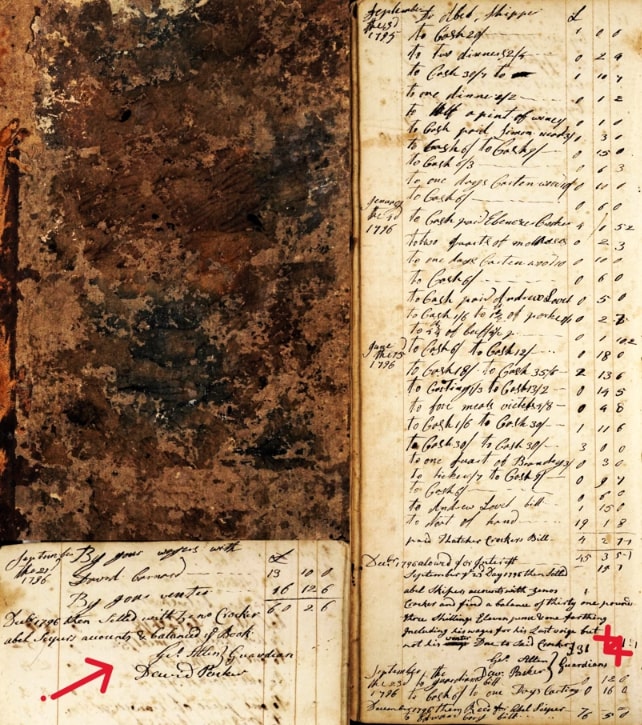
According to records, the overseers of the Mashpee plantation in 1794 were: Hon. Walter Spooner, Esq. of New Bedford; Hon. Joshua Thomas, Esq. and Ephraim Spooner, Esq. of Plymouth; Holmes Allen, Esq. of Barnstable; and Katie’s 6th great grandfather Rev. Gideon Hawley.
As referenced in previous stories, Rev. Hawley often negotiated on behalf of the Wampanoag Indians who voiced their objections to having guardianship. However, there were those who insisted guardianship was necessary to help prevent theft from outsiders who were stealing wood and other resources from the Mashpee Tribe.
Part of a letter written 12 December 1794 by Rev. Hawley supporting the concept of guardianship was published in a 1795 newspaper article.
The article first stated that both Hawley and Rev. Zechariah Mayhew were giving their “paternal care” to the Indians on Martha’s Vineyard and Cape Cod.

This snippet reported:
The Indians of Martha’s Vineyard, and Cape-Cod, remain at their former seats, and are under the paternal care of two worthy missionaries now advanced in years, the Rev. Zacharias Mayhew, and Gideon Hawley.
Then the article quotes part of Hawley’s letter.
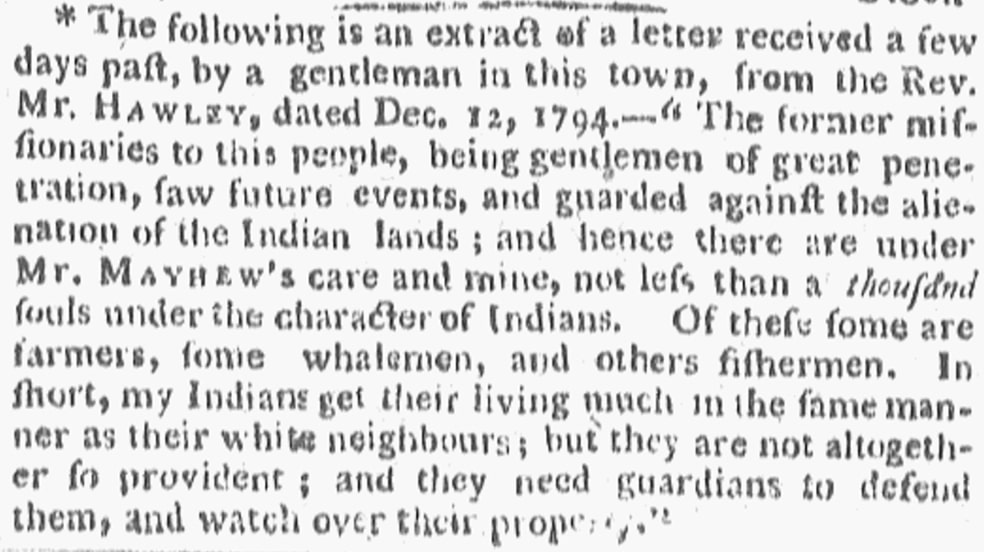
It reads:
The following is an extract of a letter received a few days past, by a gentleman in this town, from the Rev. Mr. Hawley, dated Dec. 12, 1794. – “The former missionaries to this people, being gentlemen of great penetration, saw future events, and guarded against the alienation [theft] of the Indian lands; and hence there are under Mr. Mayhew’s care and mine, not less than a thousand souls under the character of Indians. Of these some are farmers, some whalemen, and others fishermen. In short, my Indians get their living much in the same manner as their white neighbors; but they are not altogether so provident, and they need guardians to defend them and watch over their property.”
Gideon Hawley drew this reservation map of the Mashpee Indians for Reverend Isaac Smith in 1785. This manuscript survey sketch provides an early example of the treaties between American leaders and native peoples that designated land for their use. The map shows Indian houses, streams, and English property.
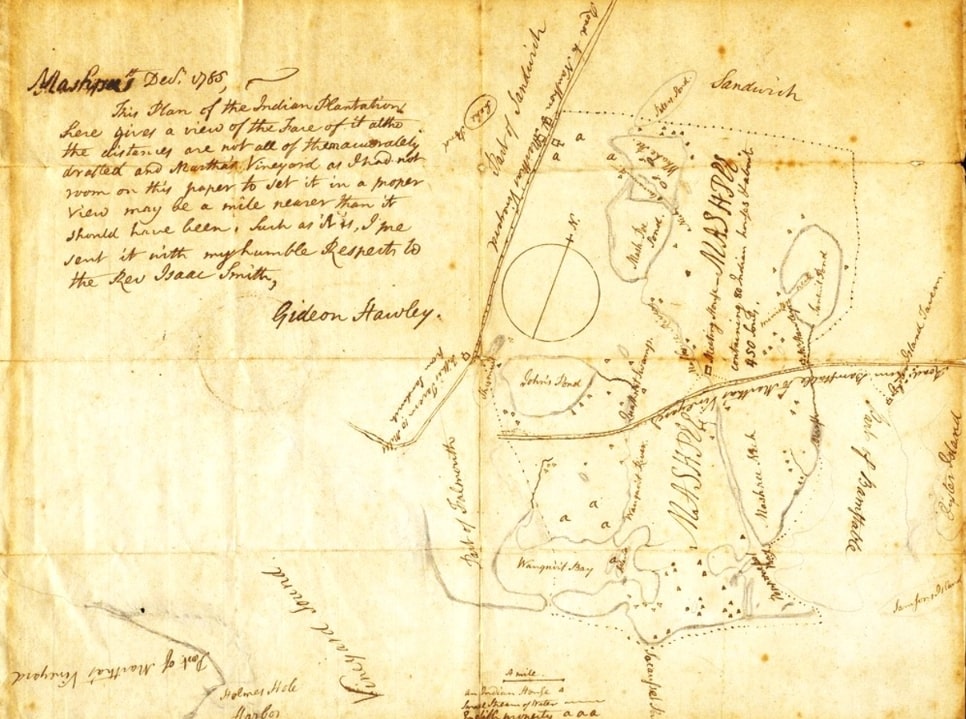
Guardian George Allen
George Allen (1731-1810), a prosperous farmer of Sandwich, Massachusetts, was born to Cornelius and Dorothy Allen. He was a descendant from several Quakers including Lodowick Hoxie. He married Rebecca Spooner, daughter of Nathaniel Spooner and Phebe Cushman.
Rebecca’s ancestor Thomas Cushman, a leader in Plymouth Colony who came on the ship Fortune, married Mayflower passenger Mary Allerton, daughter of Isacc Allerton.
Thomas and Mary are listed on one of the plaques on the Cushman Monument, located in the Burial Hill cemetery in Plymouth, Massachusetts, and erected in 1858.
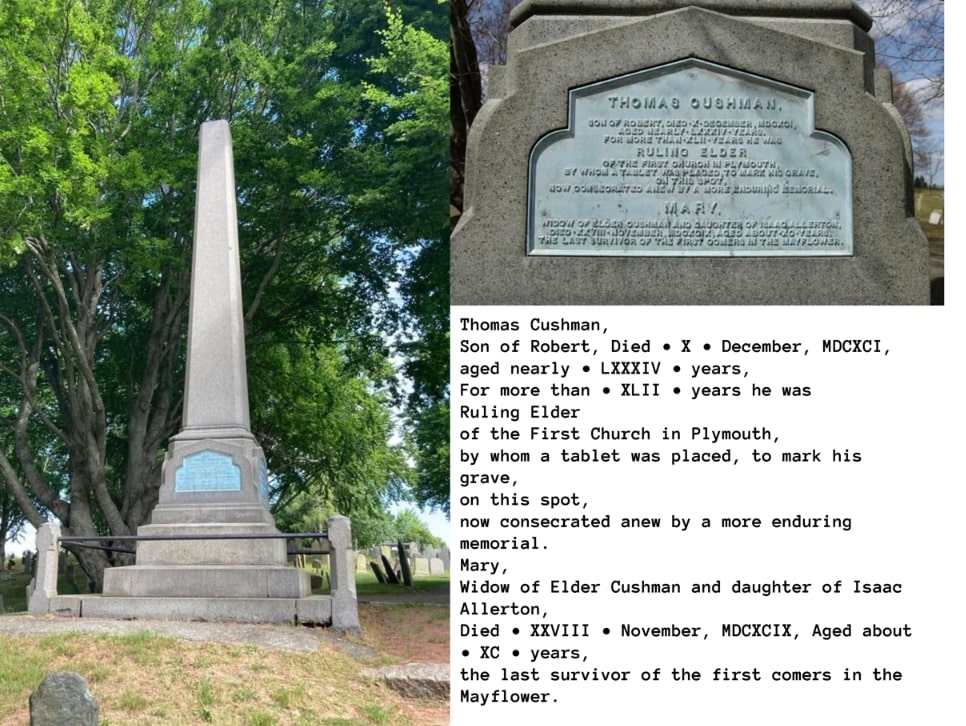
Both parents of Rebecca Spooner descend from Mayflower passenger Richard Warren through two daughters born to his son Nathaniel Warren and wife Sarah Walker:
One of those daughters, Sarah Warren, married John Blackwell. Their daughter Alice Blackwell married William Spooner, and their son Nathaniel Blackwell married Phebe Cushman.
The other daughter, Alice Warren, married Thomas Gibbs. Their daughter Sarah Gibbs married Isaac Cushman, and their daughter Phebe Cushman married Nathaniel Spooner.
Guardian David Parker
The second guardian, David Parker, Esq. (1740-1813), was the son of David Parker Sr. and his second wife Mercy Crosby. David Parker Jr. married Mehitable Hall, daughter of Joshua Hall and Temperance Nye.
Mehitable was a direct descendant of Katie Crocker’s 10th great grandfather Richard Bourne, aka “the White Sachem” or “Little Father,” a missionary that the town of Bourne is named for who helped secure the Mashpee reservation land and a meeting house for the Indians.
A special relic of this Parker family that still survives is a silver tankard made by John Noyes, a Boston silversmith. It was made for David Parker Sr., son of Judge Daniel Parker and Mary Lombard/Lumbert.
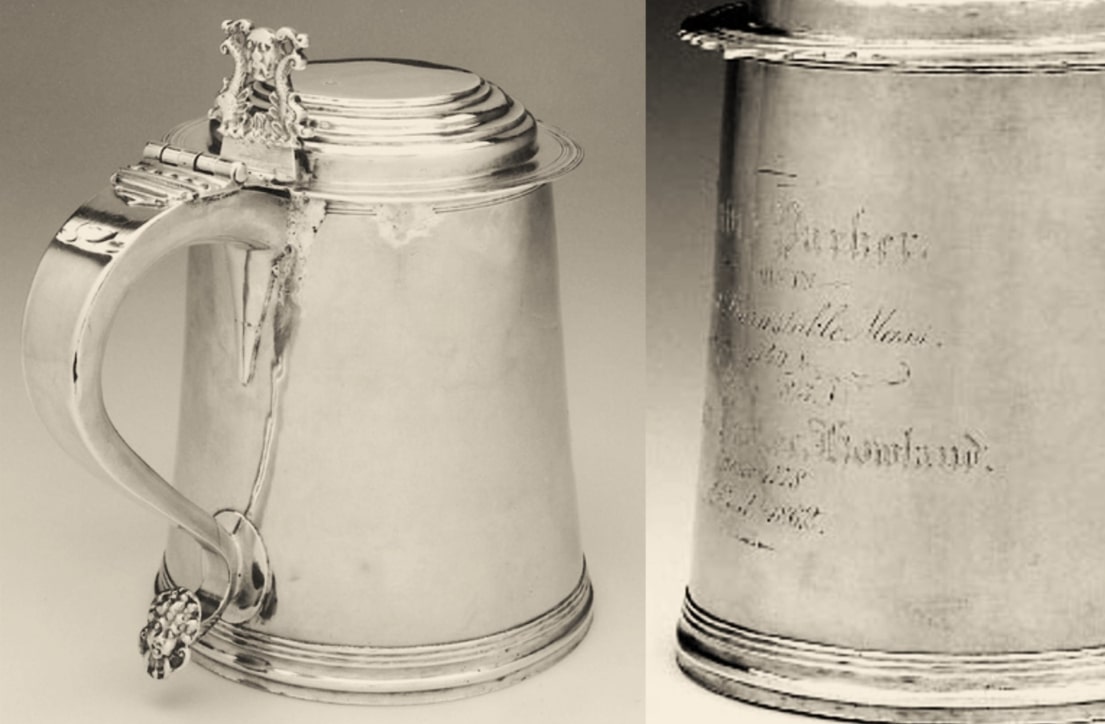
The tankard was given to our subject David Parker Jr. and then to his daughter Hannah Parker, who married Jabez Howland (a direct descendant of Mayflower passengers John Howland and Elizabeth Tilley).
The tankard then passed by descent to their daughter Hannah Howland, who married Ambrose Haywood (a descendant of Mayflower passenger Richard Warren). It was then passed to their son Albert Francis Haywood, who married Louise Miranda Belden (a descendant of Mayflower passengers John Alden and Priscilla Mullins). Then it was passed to their son Carle Reed Haywood, who married Mary Gordon Murray, the donor of the tankard.
The evidence of the provenance of this tankard is corroborated by Parker’s surviving will, and revealed by a later engraving with the inscription: “David Parker / BORN IN / West Barnstable, Mass. / 1740. / DIED 1813. Hannah Parker Howland / BORN 1778 / DIED 1862.”
A daughter born to Hannah and Jabez, Lydia Parker Howland, married Silas Jones, son of Jediah Jones (also found in the Crocker family account book} and Olive Fish, a granddaughter of Katie’s 7th great grandparents Nathaniel Fish and Marey Tobey.
To be continued…
Explore over 330 years of newspapers and historical records in GenealogyBank. Discover your family story! Start a 7-Day Free Trial
Note on the header image: “Mayflower in Plymouth Harbor,” by William Halsall, 1882. Credit: Wikimedia Commons.
Related Articles:
- Mayflower Descendants: Who’s Who, Part 35 (part 1)
- Mayflower Descendants: Who’s Who, Part 35 (part 2)
- Mayflower Descendants: Who’s Who, Part 35 (part 3)
- Mayflower Descendants: Who’s Who, Part 35 (part 4)
- Mayflower Descendants: Who’s Who, Part 35 (part 5)
- Mayflower Descendants: Who’s Who, Part 35 (part 6)
- Mayflower Descendants: Who’s Who, Part 35 (part 7)
- Mayflower Descendants: Who’s Who, Part 35 (part 8)
- Mayflower Descendants: Who’s Who, Part 35 (part 9)
- Mayflower Descendants: Who’s Who, Part 35 (part 10)
- Mayflower Descendants: Who’s Who, Part 35 (part 11)

I have a written story regarding Rebecca Spooner, saying she was born to an Algonquin woman and a white man. She was born according to birth records in Feb. 1760. James Spooner was her father. Is there any way to discover relationships between the Algonquin Indians and white men? James did serve in the French and Indian War. I read where soldiers were allowed to take children under 14 from the tribe into their families.
Carla, thanks for reaching out. I have found some possibilities and I will email you.